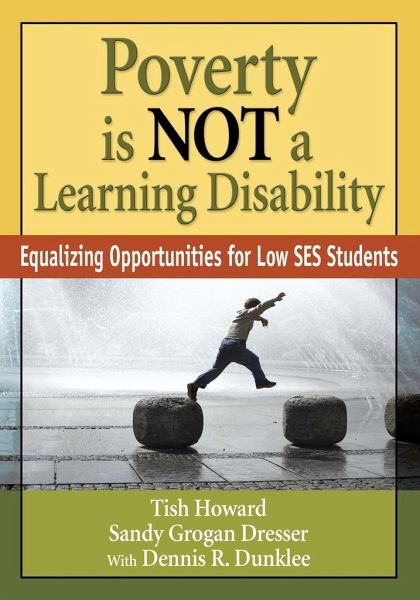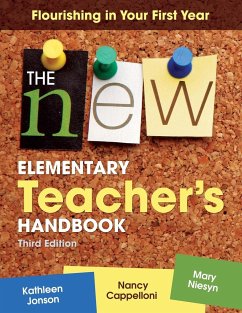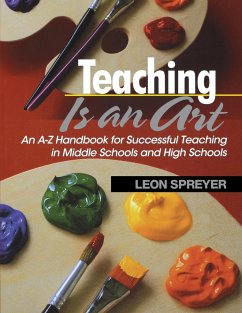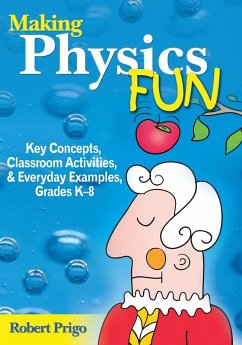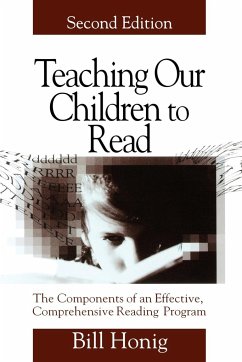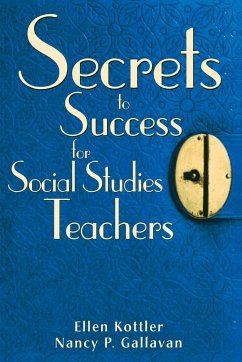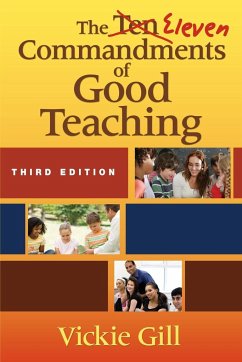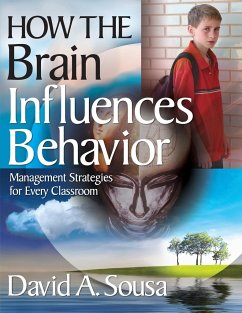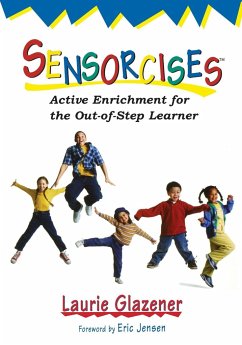Poverty Is NOT a Learning Disability
Equalizing Opportunities for Low SES Students
Versandkostenfrei!
Versandfertig in 1-2 Wochen
Weitere Ausgaben:

PAYBACK Punkte
15 °P sammeln!




Proven strategies for increasing the academic performance of students with low school-readiness skills! Children of low socioeconomic status often enter school with low school-readiness skills, leading them to be misid
Lizette (Tish) Howard has 20 years of experience as an educator working with children and parents in low socioeconomic schools. She is an elementary principal in a Title I school in which 43 percent of its families are classified as living in poverty. In this position, Howard is responsible for the design and implementation of numerous programs and a school climate that raised the level of student academic success and closed the achievement gap between students of poverty and those residing in homes of economic stability. Howard works with parents, civic associations, clergy, and the business community to level the economic playing field for disadvantaged students and has implemented numerous initiatives to provide the necessary background knowledge many children from poverty lack when entering school. Prior to her role as a school administrator, Howard served 10 years as a speech and language pathologist with a full caseload of language delayed children. She spent eight of those 10 years delivering services to emotionally disturbed adolescent males in an alternative educational setting. It was in that capacity that Howard introduced inclusion language therapy to her school district as opposed to the standard pull-out method. This form of therapeutic delivery is now widely used districtwide. Howard has served as an education consultant for local preschool and summer camp experiences. She designed an educational summer experience for low socioeconomic children that focused on providing a foundation for the academic challenges they would face in the upcoming academic year. She also served on the Minority Student Achievement Board for her school system and has presented programs on intervention methods at the local school and university level. Howard earned her bachelor's and master's degrees in speech and language pathology from Indiana University of Pennsylvania and her PhD in education leadership from George Mason University. While completing her postgraduate work, Howard was a contributing writer to the USA Today educational web site, and she continues to mentor prospective administrators through the university mentoring program. She has been nominated for Principal of the Year honors in her school district, recognized by the Association of Supervision and Curriculum Development for development of positive school climate, and featured in numerous television and print articles.
Produktdetails
- Verlag: Corwin
- Artikelnr. des Verlages: B69031P
- Seitenzahl: 160
- Erscheinungstermin: 30. Juli 2009
- Englisch
- Abmessung: 254mm x 178mm x 9mm
- Gewicht: 315g
- ISBN-13: 9781412969048
- ISBN-10: 1412969042
- Artikelnr.: 26220295
Herstellerkennzeichnung
Libri GmbH
Europaallee 1
36244 Bad Hersfeld
gpsr@libri.de
Für dieses Produkt wurde noch keine Bewertung abgegeben. Wir würden uns sehr freuen, wenn du die erste Bewertung schreibst!
Eine Bewertung schreiben
Eine Bewertung schreiben
Andere Kunden interessierten sich für




